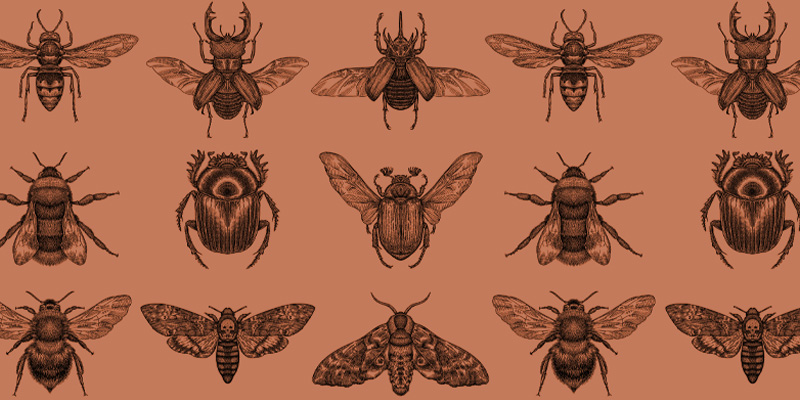August 21, 2025, 11:25am
A couple of weeks ago I happened upon a sex hormone named after Mr. Darcy, and it sent me down a rabbit hole, looking for other odd names scientists have bestowed on their discoveries. As a result I’ve spent too much time digging into these lists of organisms named after famous people, which are so long that Wikipedia had to break up the list to keep the spreadsheet from crashing your browser.
The creatures named after writers are mostly bugs, which makes sense. There are a lot of those little guys writhing around, and I imagine most of them escaped our attention for long enough that science had to start reaching for new names. And a lot of them are wasps: Dante has two wasps named after him; Marx has two, Didion has one, Dickens has two, Zola has two, Thoreau has seven, and Shakespeare has three wasps and a bacterium. Nabokov has a lot of butterflies, naturally.
Here are a few of the most interesting critters named for authors I uncovered:
The Obvious
Michael Crichton: Three dinosaurs, Crichtonsaurus, Cedrorestes crichtoni, and the Chinese anklysaur Crichtonpelta.
Herman Melville: The fossil sperm whale Leviathan melvillei.
Franz Kafka: The beetle Stenotarsus kafkai.
Peter Benchley: The shark Etmopterus benchleyi. Its common name is “Ninja Lanternshark,” because of its camouflaging black coloration. If anyone’s rebooting this franchise, Jaws vs. Ninjas would get butts in the seats.
The Clever Deep Cuts
Patrick O’Brian: The weevil Daisya obriani. The naming of this weevil was adorably championed by The Gunroom of HMS Surprise.org. And fitting the honor, Daisya obriani is a lesser weevil.
Douglas Adams: The ant Tetramorium adamsi, the cockroach Arenivaga adamsi, and the lizard Dravidogecko douglasadamsi. This lizard has 42 pheromone-spraying precloacofemoral pores, and 42, you may remember, is the meaning of life in The Hitchkiker’s Guide to the Galaxy.
N.K. Jemisin: The scaffold web spider Nesticus jemisinae, only found in one Tennessee cave. An homage to the subterranean colony in her Broken Earth series.
Cyrano de Bergerac: The bee Chlerogella cyranoi, which has an elongated head like Bergerac’s large nose.
Elephantis: The crustacean Elephantis, “after an ancient Greek erotical poetess in reference to the enlarged sexual appendages of [the crustacean’s] males.”
Robert Frost: The wasp Aleiodes frosti, which chooses the road not taken as a larvae, emerging from a host caterpillar in a way that is unique amongst its relatives.
Diogenes: The Cretaceous lacewing larva Hallucinochrysa diogenesi. Named after the minimalist philosopher who apparently lived in a jar in Athens, and who also lent his name to Diogenes syndrome, a disorder of neglectful hoarding. This larva camouflaged itself by covering its body with debris, its “exceptionally long bristles formed a basket which enabled it to carry a very large ‘trash packet,’” kind of like if trying to carry all the recycling out in one trip were a survival technique.
The Crime Wasps
Arnaldur Indriðason: The wasp Sphaeropthalma arnalduri.
Dashiell Hammett: The Colorado Desert velvet ant Odontophotopsis hammetti.
Raymond Chandler: The Colorado Desert velvet ant Sphaeropthalma chandleri. Velvet ants are known for their painful stings and their solitary lives, living outside of social systems. A lonely, sharp-barbed wasp wandering the American West? Sounds exactly like a noir protagonist.
The Name That’s Verging on Literary Criticism
John Updike: The jewel beetle Agrilus updikei, a reference to the bug’s mimicry: “Although Updike published sparingly on Neotropical beetles (1963), his use of metaphors, widely admired by critics, recommends this honor because, in a sense, a species which mimics another is a kind of metaphor for the mimicked species and benefits by being confused for its model by uncritical predators.”
The Most Appreciated Leech
Amy Tan: The Australian leech Chtonobdella tanae. Her book Saving Fish from Drowning, from drowning features a number of leeches. Tan loved the name and said she’s “planning my trip to Queensland, Australia, where I hope to take leisurely walks through the jungle, accompanied by a dozen or so of my namesakes feeding on my ankles.”
